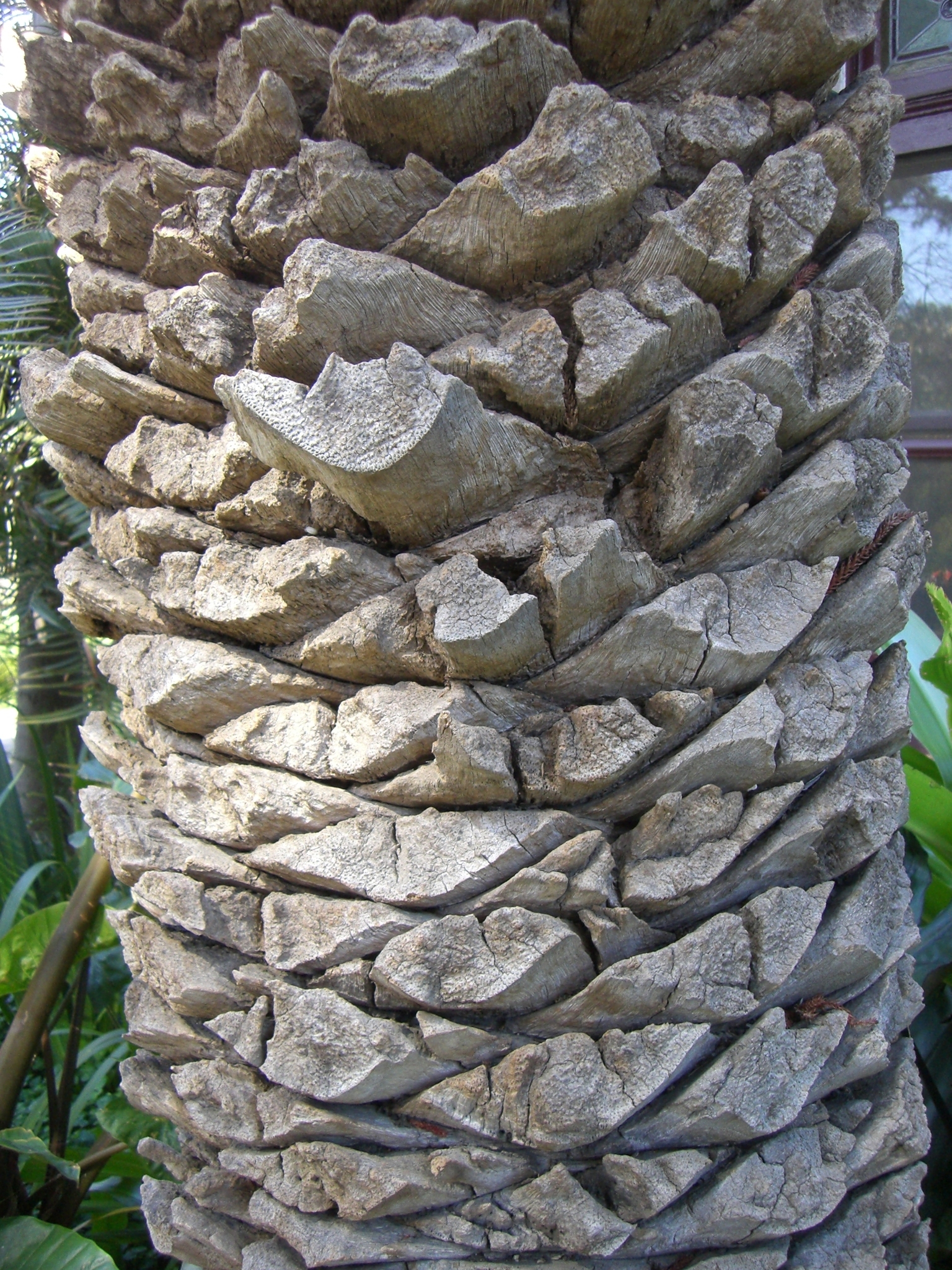
Sturdy solitary palm. Trunk to 20 m tall, stout, dark grey, covered with woody leaf bases. Leaves to 5-6 m long, arching in a rounded crown, light green to dark green, sometimes with a hanging skirt of dead leaves. Leaflets up to 200 on each side of the leaf, arranged in a flat plane. Flowers cream to yellowish, in conspicuous arching panicles to 3 m long. Fruit about 3 cm long, bright yellowish-orange.
Canary Islands
Grows in grassland and scrubland.
One of the most popular palms which is widely planted and can be successfully grown from the tropics to temperate regions. Extremely hardy and very tolerant of neglect. Large specimens are often transplanted into shopping centres and car parks. Very frost tolerant.
Has become naturalised in many areas and persists around old sites of habitation.
Leaves are used for weaving and in the Christian festival of Palm Sunday; the flower buds are a source of edible sweet sap called palm honey.
Tall solitary palm with a stout woody grey trunk and a rounded crown of light green to dark green feather-shaped leaves with the leaflets arranged in a flat plane.
NSW: Sydney (Royal Botanic Garden Sydney). Vic: Albert Park (round St Vincents Gardens remnants of 53 trees ptd 1909); Ballarat (St Patricks College, Sturt St); Burnley (The University of Melbourne - Burnley Campus); Carlton (Canning St, long avenue); Caulfield Park; Clifton Hill (Darling Gardens); Coburg (De Chene Reserve); Doncaster (Shopping Centre, old specimens transferred from the main axial avenue into Melbourne University before re-landscaping in early 1970's); Essendon (Alexander Road); Footscray (Footscray Park); Geelong (Princes Highway in front of the Ford Factory); Glen Waverley (Jells Park); Kew (Victoria Park); Melbourne (Royal Botanic Gardens Victoria (Melbourne Gardens); Albert Park, Lake and surrounds - many trees); Moonee Ponds (Queens Park); Rushworth (central plantation opposite Hotel); Rochester (Main Street); Sale (Main Avenue interplanted); Melbourne City (tall old trees - S. & E boundary Fitzroy Gardens, Carlton Gardens, Gordon Reserve, Parliament Gardens, Treasury Gardens, next to Princes Bridge); St Kilda (St Kilda Botanical Gardens; about 100 old trees in Catani Gardens, the States largest plantation); Yarraville (Yarraville Gardens).
Morici (1998).
Source: (2005). Arecaceae. In: . Horticultural Flora of South-eastern Australia. Volume 5. Flowering plants. Monocotyledons. The identification of garden and cultivated plants. University of New South Wales Press.
